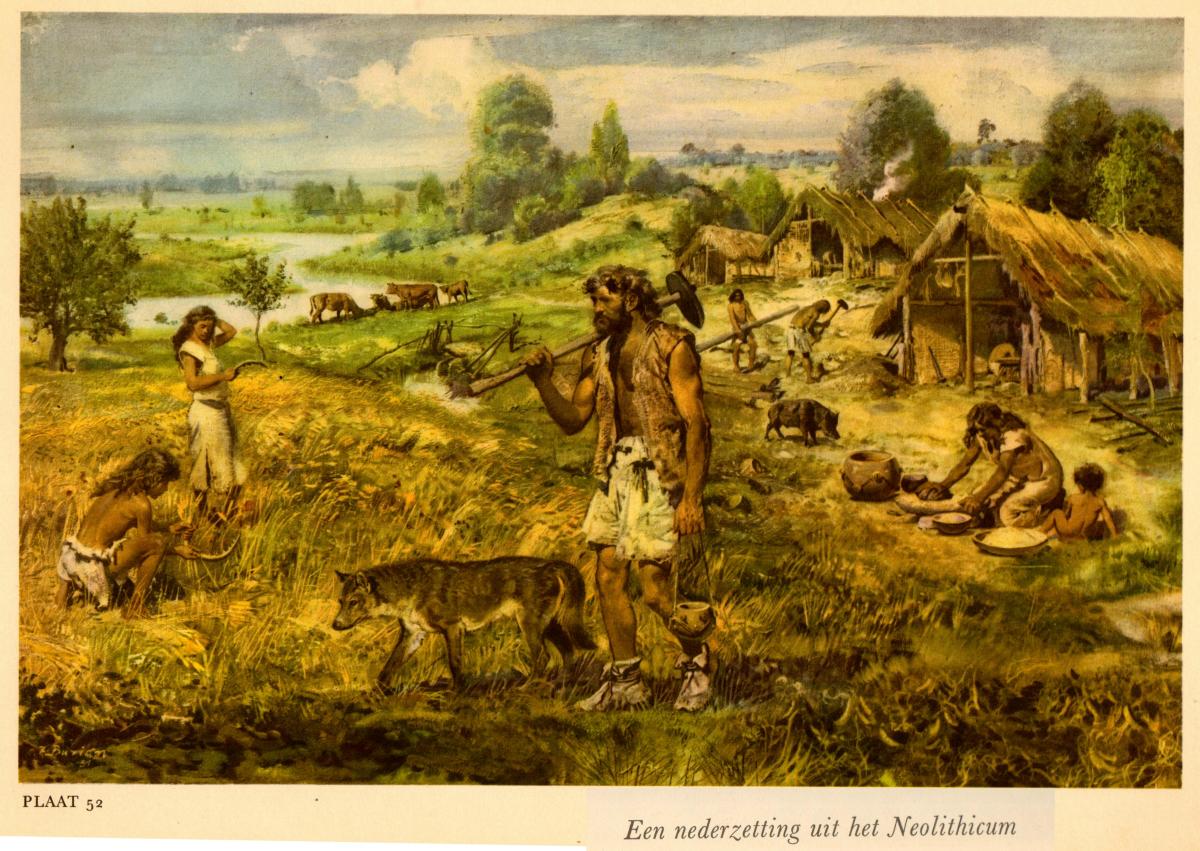Neolithic Revolution Guide: Understanding The Shift

The transition from a nomadic, hunter-gatherer lifestyle to one centered on agriculture and settlement is one of the most pivotal moments in human history. This transformation, known as the Neolithic Revolution, laid the groundwork for the development of civilizations as we know them today. It marked a significant shift from a lifestyle where people roamed in search of food to one where they settled, grew their food, and began to build the foundations of modern society.
Introduction to the Neolithic Era
The Neolithic era, which spans from approximately 10,000 to 4,000 BCE, saw the earliest developments in agriculture. This was not a uniform process across the globe; different regions adopted agricultural practices at different times, influenced by factors such as climate, geography, and the availability of domesticable plants and animals. The Fertile Crescent, a region that includes modern-day Iraq, Syria, Lebanon, Jordan, Israel, and parts of Turkey and Egypt, is often cited as one of the first places where agriculture emerged.
Key Features of the Neolithic Revolution
Several key features characterize the Neolithic Revolution, including:
Domestication of Plants and Animals: This was the cornerstone of the Neolithic Revolution. People began to domesticate plants such as wheat, barley, and legumes, and animals like sheep, goats, and cattle. Domestication allowed for a more reliable food source, which in turn supported larger, more settled populations.
Development of Settlements: As agriculture provided a stable food supply, people began to settle in one place. These early settlements eventually grew into villages and, over time, into cities. The development of settlements marked a significant change from the nomadic lifestyle of hunter-gatherers.
Emergence of Social Hierarchies: With the advent of settled agriculture, social hierarchies began to emerge. Some individuals controlled more land or resources, leading to inequalities within societies. This marked a shift towards more complex social structures.
Advancements in Technology: The Neolithic period saw advancements in technology, particularly in tools and pottery. The development of the wheel, for example, facilitated transportation and trade.
Theories on the Causes of the Neolithic Revolution
There are several theories about what prompted the Neolithic Revolution. One of the most enduring theories is the “Oasis Theory,” which suggests that as the climate changed and deserts expanded, people were forced into more fertile areas (oases), where they had to develop new strategies for survival, including agriculture. Another theory points to population pressure, suggesting that as populations grew, people had to find more reliable ways to produce food, leading to the development of agriculture.
Impact of the Neolithic Revolution
The Neolithic Revolution had profound impacts on human history. It led to:
- Population Growth: A stable food supply allowed populations to grow significantly.
- Development of Specialized Labor: As food production became more efficient, some individuals were able to pursue other activities, such as crafting, trade, and governance.
- Emergence of Complex Societies: The combination of settled agriculture, social hierarchies, and specialized labor paved the way for the development of complex societies and, eventually, civilizations.
Challenges and Limitations
Despite its pivotal role in human history, the Neolithic Revolution was not without its challenges. The shift to agriculture led to a less diverse diet for many people, contributing to nutritional deficiencies. Additionally, settled populations became more vulnerable to diseases, and the emergence of social hierarchies led to inequalities.
Conclusion
The Neolithic Revolution represents a critical turning point in human history, marking the shift from a nomadic, hunter-gatherer lifestyle to one centered on agriculture and settlement. This transition had far-reaching impacts, influencing population dynamics, social structures, and the development of civilizations. Understanding the Neolithic Revolution provides insight into the complexities of human society and the enduring legacies of our ancestors’ innovations and challenges.
What were the primary factors that led to the Neolithic Revolution?
+The primary factors that led to the Neolithic Revolution include climate change, population pressure, and the availability of domesticable plants and animals. These factors varied by region but collectively contributed to the transition from a nomadic, hunter-gatherer lifestyle to one centered on agriculture and settlement.
How did the Neolithic Revolution impact human population dynamics?
+The Neolithic Revolution led to significant population growth. With a more reliable food source from agriculture, populations were able to grow beyond the limits imposed by the hunter-gatherer lifestyle. This population growth, in turn, contributed to the development of more complex societies.
What were some of the technological advancements of the Neolithic period?
+The Neolithic period saw several technological advancements, including the development of pottery, more sophisticated tools made from stone and later metals, and the invention of the wheel. These advancements facilitated daily life, trade, and the expansion of settlements.
The legacy of the Neolithic Revolution can be seen in the modern world, from the structures of our societies to the food we eat. As we continue to navigate the complexities of our globalized world, understanding the roots of our civilization in the Neolithic Revolution offers valuable insights into resilience, innovation, and the human capacity to adapt and thrive.

